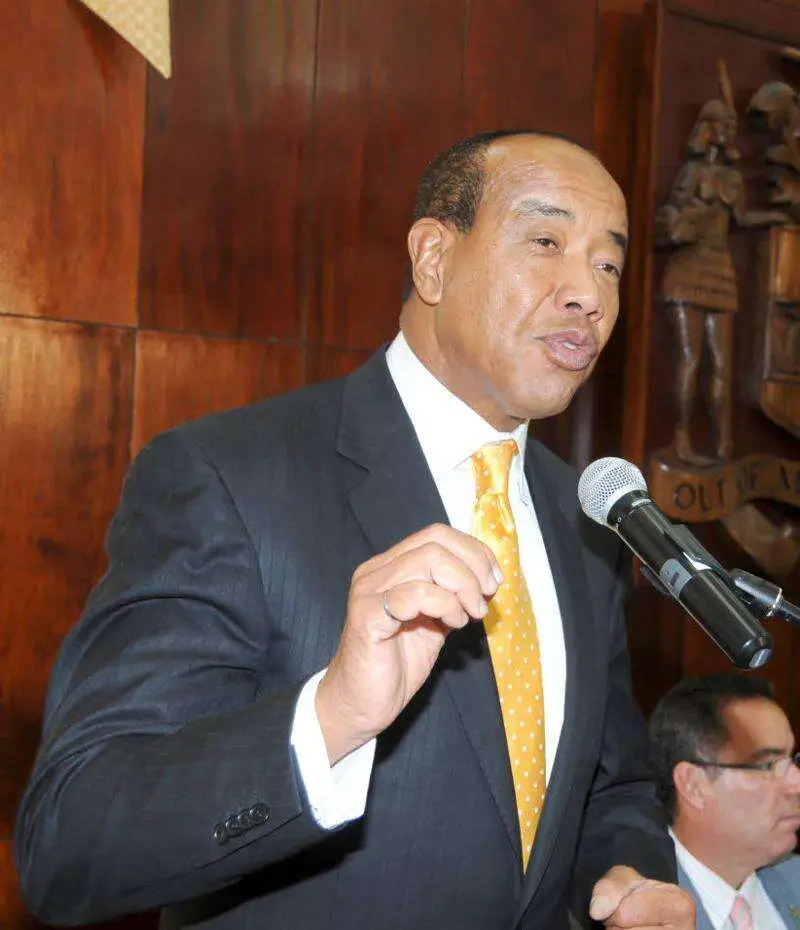
Jamaica to go nuclear
Prime Minister Andrew Holness has signalled the intentions of the Government to integrate nuclear energy in the country’s energy mix.
Speaking at the opening ceremony of Expo Jamaica 2023 last week Thursday, April 28, 2023, the prime minster revealed that already he had spoken to the International Atomic Energy Agency (IAEA) — the world’s central intergovernmental forum for scientific and technical co-operation in the nuclear field — about using nuclear energy to generate electricity.
The move will form part of the Government of Jamaica’s National Energy Policy which, in part, aims to generate 50 per cent of electric energy from renewable sources by 2030. This, Holness said, will make the supply of electricity “more reliable, more available, and more affordable”.
“Jamaica has to explore new technology in [the form of] nuclear energy — small nuclear plants to generate in Jamaica — which is cheaper, more stable and more affordable,” he explained further.

“So the Jamaica Government is serious about insulating our economy [against] energy shocks and high energy prices,” the prime minister continued.
The move has been welcomed by president of the Jamaica Renewable Energy Association (JREA) Alex Hill, who informed Jamaica Observer that “nuclear cannot be written off as future energy source”. He added that though there are pros and cons, the energy source should be considered for integration into the country’s energy mix over the next five years.
Last October, Jamaican billionaire and chairman of Portland Holdings Michael Lee-Chin signed a memorandum of understanding with the Canadian Nuclear Laboratory (CNL) under which he will be promoting nuclear technology — through small modular reactors (SMRs) — as the means to decarbonise electricity production across the world. When asked by Business Observer if Jamaica will be targeted for SMRs, he responded, “Every country is a target, whether you are a large oil-producing nation, or Jamaica, there are demands for our services.”
Still vice-president of JREA Jason Robinson is of a completely different opinion to his colleague Hill, explaining that Jamaica is not ready “or will ever be ready” for such energy source.

“Jamaica is located in a hurricane and earthquake zone which puts us in extreme danger with out having to worry about a nuclear meltdown. Also Jamaica’s brand is a natural vibe not a one that fits well with nuclear energy. I think it would take a lot away from Brand Jamaica in terms of tourism as well,” he contended.
While Robinson notes the comments of Lee-Chin, and the backing he has received from Government, the JREA vice-president told Business Observer that there needs to be a much heavier debate before there is a push towards a nuclear facility in Jamaica.
“We all can remember Fukushima and Jamaica and the Caribbean cannot withstand that type of meltdown,” he added.
Hydroelectricity
In the meantime, Holness, pointing to an announcement he made in his budget presentation in March, said on Thursday that the Government of Jamaica of creating “a new Integrated Resource Plan [IRP]” that will facilitate the introduction of new energy sources to the energy mix and ensure that the grid is stable and has the capacity to respond to the growing demand for electricity.
Back in March, Holness informed Parliament that the draft of the IRP 2 was being presented to various stakeholders for discussion and feedback, and thereafter will be finalised and presented to the Cabinet for consideration and approval.
One of the energy sources the IRP 2 will explore is hydroelectricity from hydro storage pumps. In particular, he said the Government is pursuing the Mahogany Vale Project as a national priority and an important element in the energy mix. The Mahogany Vale Dam, located in St Thomas, was first proposed as a source of convert electricity from potable water supplied to the Kingston Metropolitan Area in 1967.
“These initiatives will not materialise in two years. It may take a decade to materialise but I want you to reflect on it: we have been lagging behind for 40 years. Let’s start doing things differently now, let’s start looking at the big picture to transform our country [and] let’s start looking at big projects that are going to make a difference,” Holness urged.
The introduction of new energy sources, the prime minister argued, will create a new paradigm in energy and “change the parameters that can reduce the cost of production, increase [businesses’] capacity, and ensure [businesses] can innovate integrate technology and compete effectively with the rest of the world”.
























